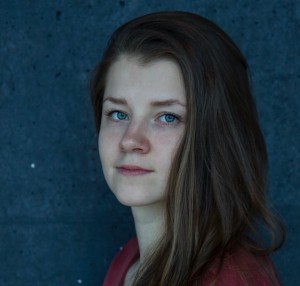What's the current mood in graphic art? The latest Grafixx festival in Antwerp (Belgium) offered us the chance to explore the thoughts of internationally acclaimed names and young talent.
Jan Van Der Veken, re–interpreter of the Belgian Ligne Claire and Atom Style, and author of retro futuristic drawings, has observed that “a lot of young illustrators work in the same fashion ― limited color palette with some blend–overs, and tons of things in one image. The younger generation who works with the internet gives it away like they receive it ― all at once. It becomes a popular and fashionable way to draw... Everything blends together. In that way graphic design is amorphous, there is no one who comes out totally different! In illustration there is more of a personal touch.”

Publisher of Oogachtend, professor Johan Stuyck believes that like in pop music, the graphic story–telling is becoming more diverse: “In the olden days, young people were working in the styles of their idols; now everyone is inspired by movies, literature, art. They do something very experimental and personal. I’ve never seen that amount of talent by young people!”
One of the great examples spotted at Grafixx is rising star of Belgian illustration Brecht Evens, who’s gained popularity with his works The Wrong Place, The Making Of, Panther and the latest book Paris, incarnating transparent layers and juicy coloured scenes and creatures; not to mention the witty humor and amusing free–flowing illustrations, which Norwegian Bendik Kaltenborn called "the graphic equivalent of a swinging jazz session".

Johan Stuyck says young artists tend to tell autobiographical stories, and the content of comics and illustrations alike is changing to adult subjects. This can be seen Joanna Hellgren's works. She is a Swedish illustrator who creates beautiful graphic novels mostly portraying the personal, social and ethical dilemmas of kids and youngsters ― Au pair, My Night Brother, Frances, as well as illustrations for books by other authors like My Brother’s Name is Noa about racism, and Katizi about the rough childhood of a Roma girl in Sweden. Joanna Hellgren says that nowadays readers want to see authentic books: “People ask stories about fleeing, immigration, rainbow families. People want beautiful books about the world as it is.”
Text: Ieva Laube
 Bendik Kaltenborn, Todd Terje, Albumtime
Bendik Kaltenborn, Todd Terje, Albumtime
 Joanna Hellgren, My Brother's Name is Noa
Joanna Hellgren, My Brother's Name is Noa
 Joanna Hellgren
Joanna Hellgren


